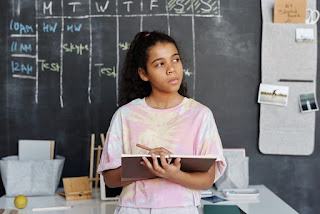Creativity is a vital skill that fuels innovation, problem-solving, and personal expression. Fostering creativity in children not only enhances their ability to think outside the box but also contributes to their emotional and cognitive development. By providing the right environment and opportunities, parents and educators can help children unlock their creative potential. Here’s a guide to activities and strategies for nurturing creativity in young minds.
1. Create a Stimulating Environment
Designate a Creative Space: Set up a dedicated area in your home or classroom where children can freely engage in creative activities. Equip it with art supplies, building materials, and a variety of tools that encourage exploration and experimentation.
Encourage a Growth Mindset: Promote an environment where mistakes are viewed as learning opportunities rather than failures. Emphasize the importance of effort and persistence over innate talent.
Example: Create a “creativity corner” with materials like clay, paints, markers, and construction paper. Let children decorate the space with their artwork to make it inviting and personal.
2. Engage in Creative Activities
Art Projects: Art activities allow children to express themselves and experiment with different mediums. Encourage drawing, painting, sculpting, and collage-making. Offer a range of materials and techniques to spark their imagination.
Storytelling and Writing: Promote creative storytelling through writing and verbal expression. Provide prompts or story starters to inspire their imagination. Encourage them to write their own stories, create comic strips, or perform skits.
Example: Host a “storytelling day” where children create their own short stories or comics and then share them with the group. Use props or costumes to make the activity more engaging.
Building and Construction: Use building blocks, LEGO sets, or recycled materials for construction projects. Allow children to design and build structures, fostering spatial awareness and problem-solving skills.
Example: Organize a “building challenge” where children work together to create a structure from a limited set of materials. This encourages teamwork and innovative thinking.
3. Encourage Imaginative Play
Role-Playing Games: Role-playing allows children to explore different scenarios and characters. Provide costumes, props, and scenarios that spark imaginative play. This helps develop social skills and creative thinking.
Example: Set up a “pretend play” area with costumes and props for various roles, such as doctors, chefs, or astronauts. Encourage children to create and act out their own stories.
Outdoor Exploration: Nature offers endless opportunities for imaginative play. Encourage outdoor activities like scavenger hunts, nature walks, or building forts with natural materials.
Example: Organize a “nature scavenger hunt” where children search for specific items or landmarks in the backyard or a local park, using their creativity to interpret clues and find hidden treasures.
4. Incorporate Music and Dance
Musical Exploration: Introduce children to different types of music and instruments. Encourage them to experiment with sounds, rhythms, and melodies. Let them create their own songs or rhythms using everyday objects as instruments.
Example: Have a “music day” where children can create their own instruments from household items, like drums from pots and pans or maracas from bottles filled with beans.
Dance and Movement: Incorporate dance and movement activities that allow children to express themselves creatively. Provide opportunities for free dance, choreographed routines, or dance games.
Example: Play a variety of music genres and let children create their own dance moves. Hold a “dance party” where they can showcase their routines and enjoy moving to the music.
5. Encourage Problem-Solving and Critical Thinking
Puzzles and Brain Teasers: Provide puzzles, riddles, and brain teasers that challenge children’s problem-solving skills. These activities stimulate creative thinking and logical reasoning.
Example: Use puzzles like Sudoku, logic games, or spatial puzzles to engage children in problem-solving. Offer different levels of difficulty to match their abilities.
Hands-On Experiments: Conduct simple science experiments or engineering challenges that require creative solutions. Use household items to explore concepts like gravity, magnetism, or chemical reactions.
Example: Create a “science lab” with experiments such as making a homemade volcano or building a simple catapult. Encourage children to hypothesize and test their ideas.
6. Promote Creative Collaboration
Group Projects: Encourage collaborative projects where children work together to create something. Group activities foster teamwork, communication, and the blending of different ideas.
Example: Organize a “group mural” where each child contributes to a large piece of artwork. Alternatively, work on a collective storytelling project where each child adds a part to the story.
Peer Feedback: Facilitate opportunities for children to share their work with peers and provide constructive feedback. This encourages them to value others’ perspectives and refine their own ideas.
Example: Host a “show and tell” session where children present their creative projects and receive feedback from their peers, fostering a supportive and collaborative environment.
7. Inspire Through Exposure
Introduce Diverse Art Forms: Expose children to various forms of art and creativity, such as literature, visual arts, theater, and dance. Visit museums, attend performances, or watch educational videos about different artistic expressions.
Example: Take children on a “museum field trip” or watch a family-friendly performance. Discuss the different art forms and encourage them to create their own interpretations.
Share Stories of Creatives: Share stories about famous artists, inventors, and other creative individuals. Discuss their work and achievements to inspire children and show them the possibilities of creative pursuits.
Example: Read biographies or watch documentaries about creative figures like artists, musicians, or inventors. Discuss their creative processes and how they overcame challenges.
Fostering creativity in children involves creating an environment that encourages exploration, imagination, and expression. By engaging in a variety of creative activities, promoting imaginative play, and providing opportunities for problem-solving and collaboration, you can help children develop their creative skills and confidence. Remember, the goal is to nurture their natural curiosity and creativity, allowing them to discover and express their unique talents. Embrace the journey of creativity and watch as children flourish in their ability to think, imagine, and create.








Comments
Post a Comment